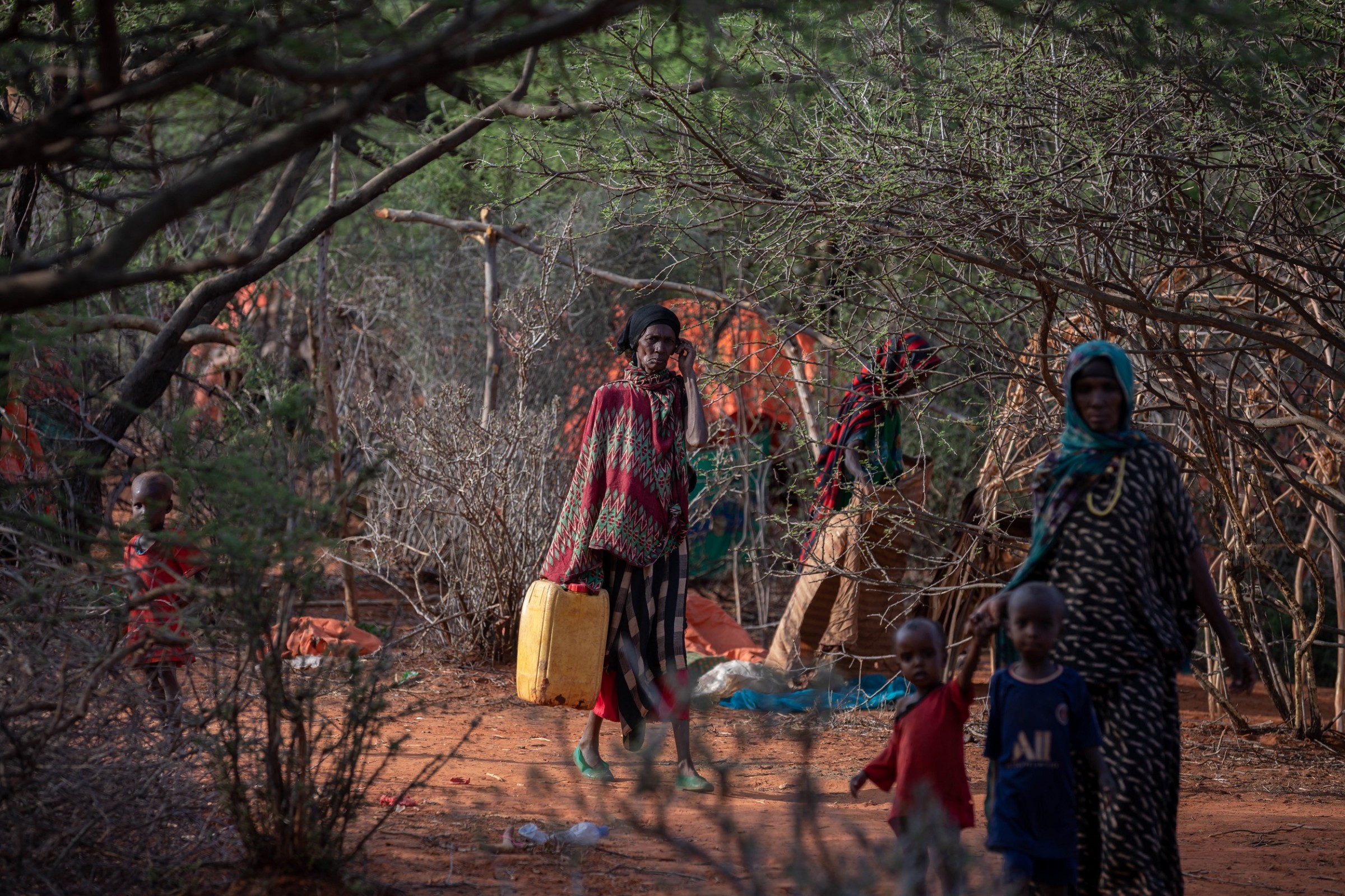Record-high global food prices coincide with failed harvests.

In the Somali region of Ethiopia, at a newly established site where people displaced by the recent drought are staying, many women and children are in desperate need of food, water, and health services. Photo ©UNICEF Ethiopia/2022/Mulugeta Ayene
By Brett Walton, Circle of Blue – April 20, 2022
- A global food price index reached a record high in March.
- Continued high food prices could produce a “tsunami effect” of famine, political destabilization, and mass migration.
- Food crises are being made worse by the convergence of drought and conflict.
Russia’s war against Ukraine is causing global food prices to soar, worsening hunger emergencies in countries like Ethiopia, Kenya, and Somalia where millions of people are not getting enough calories due to harvests and livestock that were decimated by three consecutive subpar rainy seasons.
With a fourth failed rainy season likely to occur in the Horn of Africa, the convergence of severe local drought, domestic conflict, environmental degradation, and an international food supply shock are leading to worries about famine for the region’s herders and subsistence farmers.
“This region faces an unprecedented crisis,” said Jeremy Taylor of the Norwegian Refugee Council, referring to the scale and severity of the drought and its impact on livelihoods.
International trends are not making the situation any easier. The UN Food and Agriculture Organization announced at the beginning of April that its global food price index reached its highest level since measurements began in 1990.
Russia and Ukraine are top exporters of staple crops, accounting for 30 percent of global wheat exports and 20 percent of global maize exports. The prices of those crops have spiked since February. In the month following Russia’s invasion, cereal prices climbed 17 percent, according to the FAO. Wheat prices rose by 19 percent, as did maize prices.
“We have a simple availability issue that will drive up price,” explained Bram Govaerts, the director general of the International Maize and Wheat Improvement Center, a nonprofit research organization.
The war in Ukraine will affect food markets in other ways, Govaerts said. Higher fuel prices will increase the cost of production, while reduced fertilizer exports from Russia could starve crops elsewhere in the world of the nutrients they need for bountiful yields.
The war is causing just not a ripple effect in global food markets, said David Beasley, the executive director of the World Food Program. In an interview with Al-Jazeera, Beasley said that the conflict is generating a “tsunami effect” that brings the risk of famine, political destabilization, and mass migration in import-dependent countries if food production in Ukraine continues to be curtailed.
The World Food Program, which bills itself as the world’s largest humanitarian organization, operates in countries experiencing hunger crises, and Beasley said that the organization typically buys about half its supplies from Ukraine.
Supplying food is difficult in any hunger crisis, but price increases are an added challenge this year. Higher food and fuel prices have increased the World Food Program’s operational costs worldwide by $71 million per month, according to spokesperson Steve Taravella.
The global food price spike coincides with an existing hunger crisis in the Horn of Africa that recalls a severe drought in 2010-11 in which more than 250,000 people died. Failed rainy seasons in the last three years have decimated harvests and livestock herds. The Kenyan government estimates about 1.5 million cattle have perished in recent months. The Norwegian Refugee Council reckons that 400,000 people in Somalia in January were displaced from their homes due to the drought. It was the highest monthly number in 10 years of keeping track. Adding to the strain, local and regional conflicts in Ethiopia and Somalia have delayed the delivery of aid.
A food security monitoring group warns that 4.8 million people in Somalia, or 31 percent of the population, are in crisis levels of hunger or worse. The April-to-June seasonal rains are forecasted to be below average. If that is the case, the number of people at crisis levels or higher could reach 6 million.
Poor people in Somalia’s urban areas typically pay 60 to 80 percent of their income on food. They have little capacity to absorb higher costs, aid agencies say.
The alignment of drought and conflict, Govaerts said, should be viewed as a warning sign for the future. As the planet heats up, the risk of weather disasters — droughts, floods, hail storms — in multiple grain-growing regions increases.
“This is just an example of what’s about to come,” Govaerts said during a panel discussion hosted by the Wilson Center. “Our global systems will have these kinds of interruptions driven by climate change, not only in one country but in multiple countries at the same time, which can equally represent an interruption in the global breadbaskets.”
Even now, major wheat-producing regions in the United States, which could be expected to take up some of the slack, are experiencing drought. The FAO notes in its monthly supply-and-demand briefing that long-term dryness in those areas is hurting the potential crop yield.
Brett writes about agriculture, energy, infrastructure, and the politics and economics of water in the United States. He also writes the Federal Water Tap, Circle of Blue’s weekly digest of U.S. government water news. He is the winner of two Society of Environmental Journalists reporting awards, one of the top honors in American environmental journalism: first place for explanatory reporting for a series on septic system pollution in the United States(2016) and third place for beat reporting in a small market (2014). He received the Sierra Club’s Distinguished Service Award in 2018. Brett lives in Seattle, where he hikes the mountains and bakes pies. Contact Brett Walton



